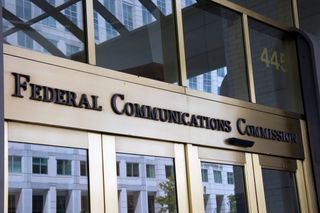FCC Says OTT Is Effective Cable Competitor

With a unanimous vote, the FCC has effectively ended the era of basic-cable regulation, while providing a potential shield against its return if traditional satellite video migrates to over-the-top.
The vote also means the end of the requirement that cable operators carry TV stations on the basic tier. More than 99% of cable systems were already deemed competitive, but the decision wraps up some loose ends.
The FCC declared at its Oct. 25 public meeting that the AT&T TV Now over-the-top video service meets the definition for a local exchange carrier (LEC)-delivered competing video distributor, which means Charter Communications cable systems in Massachusetts and Hawaii are subject to effective competition and thus no longer subject to basic rate regulation.
Those were the last markets in the country where local regulators had successfully rebutted the FCC’s presumption since 2015 that all cable systems were subject to effective competition, thanks mostly to the available satellite-TV alternatives Dish Network and DirecTV.
FCC chairman Ajit Pai called the decision a recognition of the realities of internet-delivered competition from the likes of Netflix, Hulu and Amazon, and the coming competition from Disney+ and Apple TV+. It “strained credulity” to suggest cable was not now subject to effective competition “across the nation,” Pai said.
Charter and trade group ACA Connects, which petitioned the FCC for the OTT effective-competition declaration, were doing more than simply cleaning up the last vestiges of basic-rate regulation.
Cable operators want to establish the precedent that OTT video represents equivalent effective competition and do so now, before over-the-top becomes the video delivery system of choice for former satellite customers and as local regulators look to capitalize on the decline in satellite-TV customers to reregulate.
Broadcasting & Cable Newsletter
The smarter way to stay on top of broadcasting and cable industry. Sign up below
The FCC’s order said AT&T’s OTT service, formerly known as DirecTV Now, fits all of the definitions of an LEC-provided competitive video provider for purposes of the effective competition trigger: it provides comparable services, is offered direct-to-home and is marketed by AT&T. Importantly, the item says a provider does not need to have its own facilities to be a comparable video service, one of the sticky wickets in the longstanding debate on how streaming video should be treated in Washington.
While Pai and others emphasized the decision applied to AT&T TV Now and its ability to check off all the boxes for an LEC video offering to meet the effective competition definition, the decision could also rekindle debate about what the regulatory status of OTT should be in general, given that the chairman cited Netflix, Hulu and others currently beyond the reach of program-access and carriage rules.
Pai has certainly been in no hurry to extend those rules to edge providers, though he has argued for more regulatory parity between the internet service providers and the heretofore off-limits web content companies.
Asked what other regulatory adjustments he envisioned stemming from that changed video marketplace, Pai didn’t forecast any particular change. He did say one of his goals is to have the FCC recognize that IP-based services have changed the equation, and that, “to the extent possible, our regulatory framework should adjust accordingly.”
Contributing editor John Eggerton has been an editor and/or writer on media regulation, legislation and policy for over four decades, including covering the FCC, FTC, Congress, the major media trade associations, and the federal courts. In addition to Multichannel News and Broadcasting + Cable, his work has appeared in Radio World, TV Technology, TV Fax, This Week in Consumer Electronics, Variety and the Encyclopedia Britannica.

